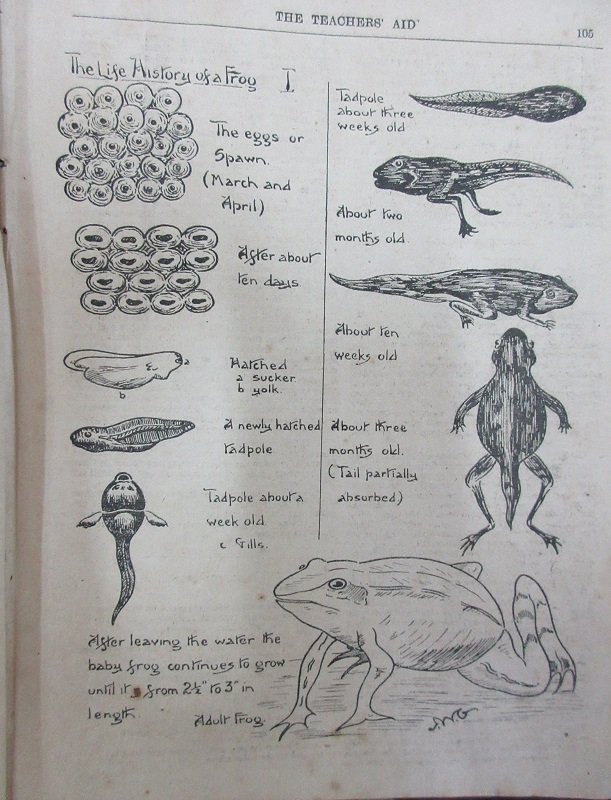Curio Critique # 13: Practical lesson in evolution
| Sl. No. | Curio Book Title | Year of Publication |
|---|---|---|
| 13 | The Teachers’ Aid- A Practical Journal For Assisting Teachers in the Work of Their Schools And in Their Private Study –Volume L April 2nd 1910 to September 24th 1910 | 1910 |
Curio Book

Curio Reference
An article under ‘Nature Notes’ in the 1910 edition of The Teachers’ Aid begins : Teachers who desire their pupils to receive a very practical lesson in evolution cannot do better than allow them to observe the development of a frog from the egg, through its larval metamorphosis to the perfect animal.

Related References
In the early years of the twentieth century, the Black Board was a major teaching aid and many depended on illustrations too.

But times have changed. The following link will take you to a Teachertube video.


Many teachers even explore the possibility of field-based activity. A recent study on the significance of nature-based study has a revealing title: Creativity in the Wild: Improving Creative Reasoning through Immersion in Natural Settings. According to the authors of this study published in an open access peer-reviewed journal : Higher order cognitive functions including selective attention, problem solving, inhibition, and multi-tasking are all heavily utilized in our modern technology-rich society.... four days of immersion in nature, and the corresponding disconnection from multi-media and technology, increases performance on a creativity, problem-solving task by a full 50% in a group of naive hikers. Our results demonstrate that there is a cognitive advantage to be realized if we spend time immersed in a natural setting.
Curio Quest
Should the practice of providing instruction in college laboratories for dissecting frogs be reintroduced? What is the best strategy for teaching the life history of animals and plants? Can smart classrooms give a better learning experience?
